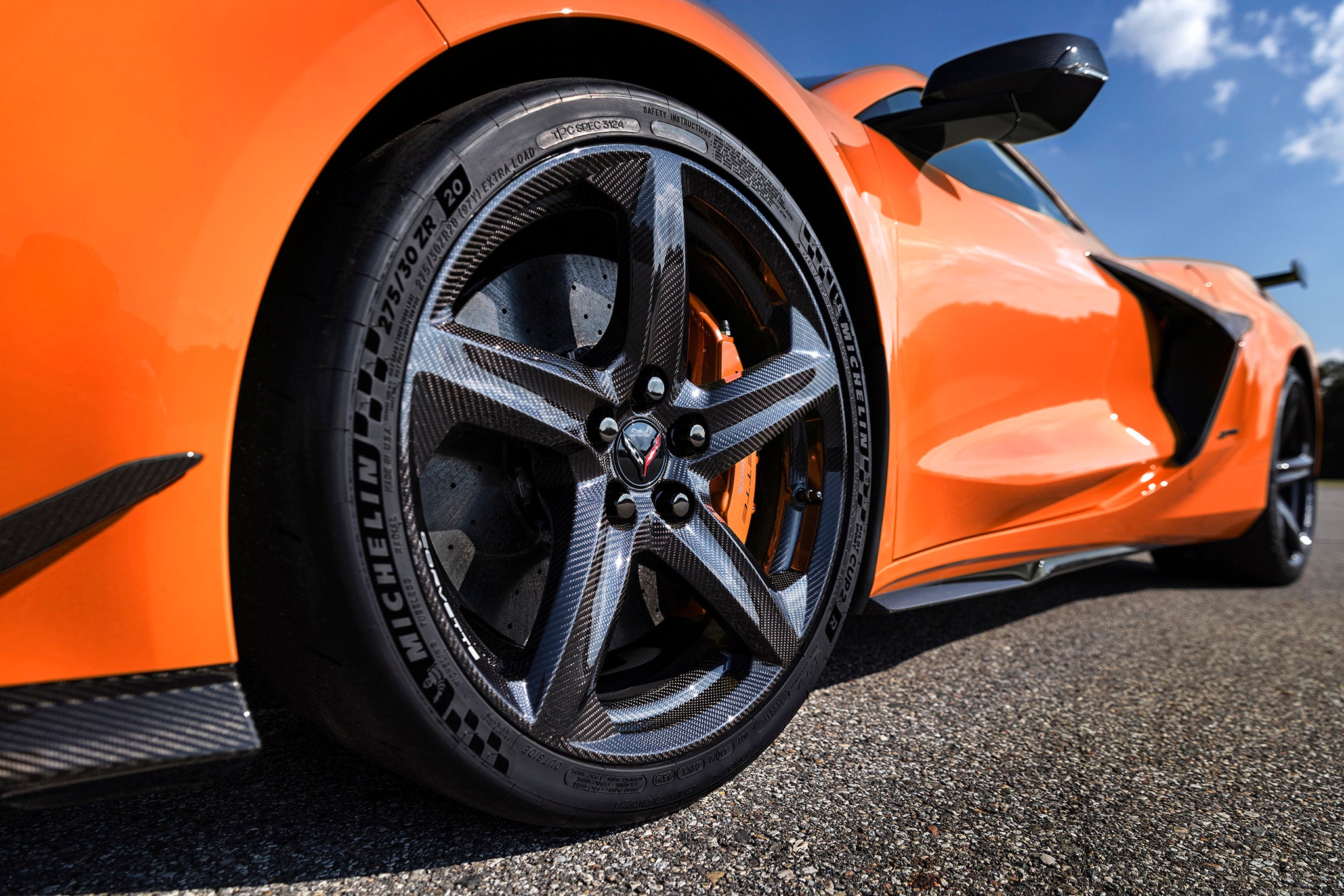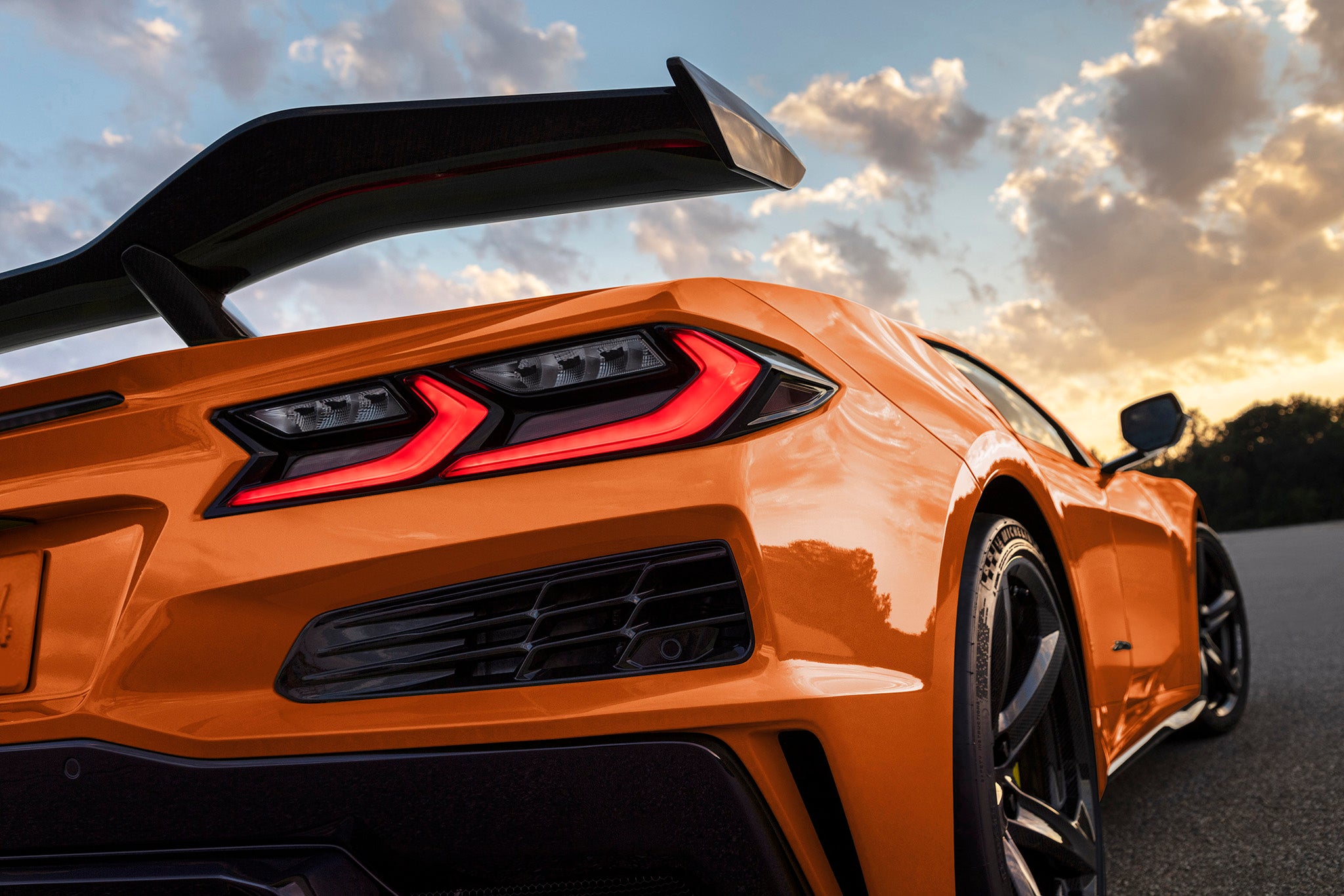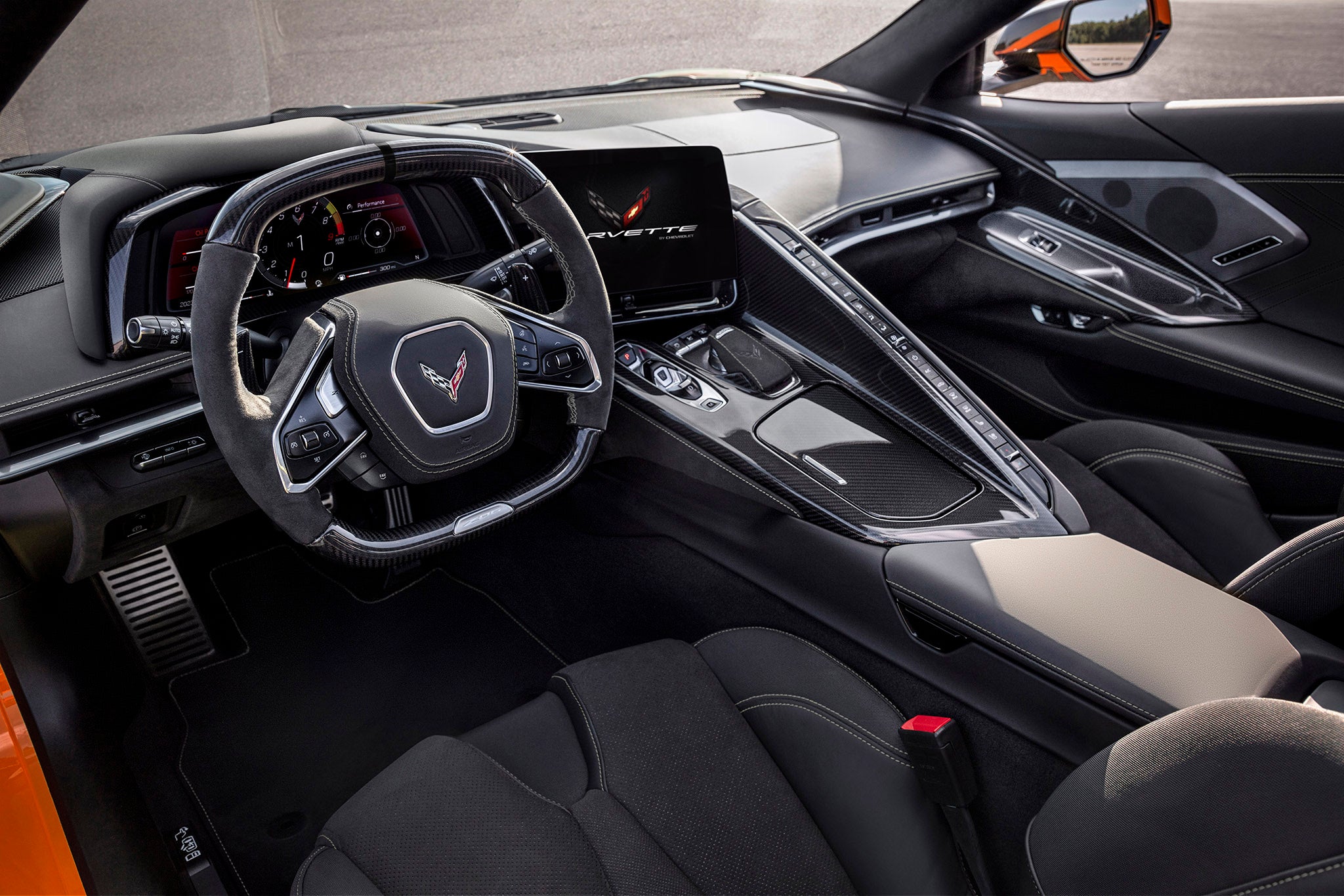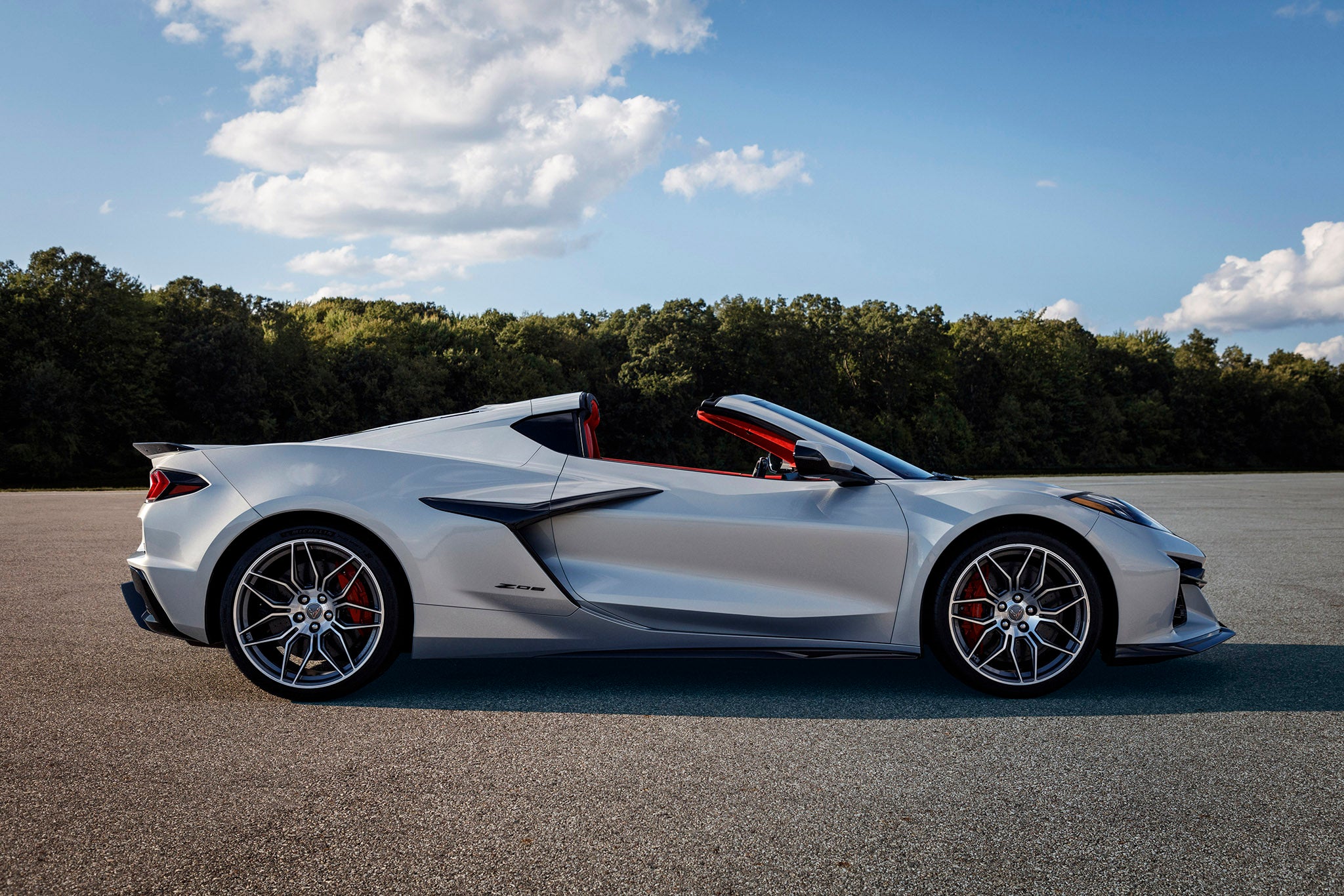In case you weren't paying attention, the new 2023 Chevy Corvette Z06 dropped yesterday, sporting a naturally aspirated, 670-horsepower, flat-plane screamer of a 5.5-liter V8 called the LT6. There's no doubt this is the car for slaying a track with, but this time around, Corvette's engineers double- and triple-checked that it hopefully won't suffer from the same overheating issues that plagued the outgoing C7 Z06.
Notably, the current C8-generation Corvette is the first time the storied American brand has ever offered a midship layout. There are many advantages to moving the engine between the car's axles—including better balance and handling—but you also have to rethink how the engine breathes, as it is no longer the first thing the air hits.
From the sound of it, the process of improving the new Z06's cooling was pretty straightforward and included the Corvette team ditching the supercharger altogether and cutting bigger holes into the body.
Natural Aspiration
At a media preview event on Tuesday, Josh Holder, a Corvette chief engineer, said that the team "learned its lesson from [the C7 Z06]." It's one of the key reasons why the C8 Z06 is naturally aspirated as opposed to supercharged. Besides the fact that Corvette heritage errs on the side of free-breathing engines anyway, "now you don't have that charge air to try to cool," Holder said. "[Getting] the power out of a naturally aspirated mitigates a bunch of cooling challenges."
Obviously, buyers and fans will expect the new Z06 to have more power than the old Z06. And though the LT6 only makes 20 more horsepower than the 6.2-liter supercharged LT4 in the outgoing car, keep in mind that's coming from an engine with no forced induction. Those of you quick with a calculator will know that the flat-plane V8 makes about 122 horsepower per liter.
"We knew that flat-plane crank was going to be the way to do that," Holder said. One advantage of the flat-plane is bay-to-bay breathing. "On a cross-plane crank, no matter what you do with firing order, there's no way to get around the fact that at some point in the firing order, two cylinders on the same side of the engine are going to fire at the same time. So you're compromising air flowing through the intake manifold and the exhaust manifold."
The LT6 is also physically larger than the LT4 small-block—"It certainly wouldn't fit under a Corvette hood," Holder said—but now that engineers no longer have to cram it underneath the Corvette's low hood, there's also way more room for it behind the driver. The team took advantage of this fact by making the intake manifold taller and increasing its volume.
Face Full of Radiators
Then there's how the car itself is also larger.
To house the monstrous, 345-section rear tires (for best putting down all the engine's power), "the whole car is about 3.5 inches wider," Holder said. A wider car means wider openings for more airflow. "We've got new front and rear fascias, new fender and quarter panels. Those larger openings bring more air through heat exchangers so we get more efficient cooling."
When fitted with the Z51 performance pack, regular C8 Corvettes get a heat exchanger at the driver's side rear of the car. The Z06 has them on both sides. "We've added, effectively, two heat exchangers, more airflow, and increased the power of the front fans," Holder said.
"The [C7] Z06 did not have any side outboard coolers when it launched," Cadillac performance variant manager Mirza Grebovic told me during the CT5-V Blackwing's launch this past summer, so it sounds like that's been addressed here.
In total, the new Z06 has five radiators/heat exchangers. There are two in the rear and the three up front are part of what Holder calls a "bulk cooling" strategy. Basically, the car has a face full of radiators.
"The primary heat exchangers are at the front of the car, even though the engine's at the back," he explained. "You can think of those as one conjoined radiator. Even though they're three separate pieces, they all share fluid and flow. We pipe cold coolant—a water-glycol mixture—to the rear of the engine, through the water pump. Some of it tees off and goes through the secondary heat exchangers. We call them step-down coolers. So you've already got that cold coolant mixture, you go back through another set of radiators that drops the temperature more, and then we feed those through the oil cooler. So that's a liquid-to-liquid heat exchanger: One of them has engine-oil-to-coolant and the other has transmission-lube-to-coolant."
You can see what Holder is talking about in our Instagram video here.
Holder went on, "Especially in a high-revving, high-horsepower engine, it's very important to keep the engine lubricants at proper operating temp. You don't want it too cold and you really don't want it too hot. The transmission is no different because of our wet clutch system. The clutches are bathed in oil. You want the temperature to be consistent. So the friction coefficient is consistent so that our transmission calibrations and everything operates the way we need them to."
Why No Roof Scoop?
As for why the car doesn't have a roof scoop?
"It's not like we haven't talked about it," Holder responded, "but the biggest challenge for us is Corvette is an open-air driving machine. The body structure was designed around an open-air car."
As it turns out, that central tunnel that splits the Corvette's cabin in half (and has drawn the ire of many a reviewer, yours truly included) is a "backbone structure member... that adds torsional- and bending-rigidity that normally a roof would carry."
Because the C8 Corvette was designed with a removable roof in mind, adding a roof scoop would have made things "complicated and convoluted," in Holder's words.
Finally, a roof scoop might not always offer all the advantages you'd think. "The other thing a lot of manufacturers see is sometimes you'll get hot air outwash over the top of the car," Holder said. "And so even though [the roof scoop] is mounted high, it tends to ingest hot air. So sometimes it's not the most efficient place to put it."
Seeing as no one outside of General Motors has driven the Z06, it's still too early to say whether or not the Corvette team's efforts have paid off. But it seems like Holder and the rest of the engineers were adamant that the new car would not suffer the same way the C7 did. They innovated and improved and gave it an engine pretty much lifted right out of a race car.
Now it's time for us to get out there and drive the thing.
Got a tip? Hit me up at [email protected].

















